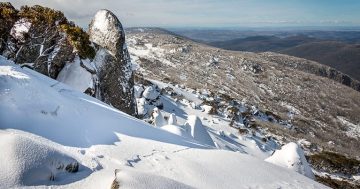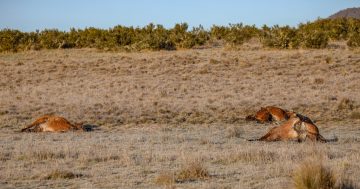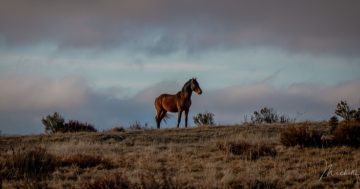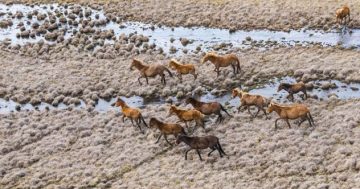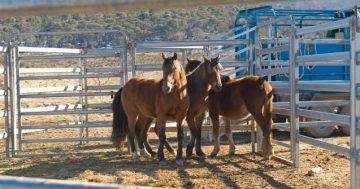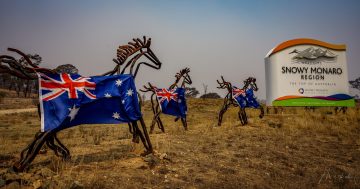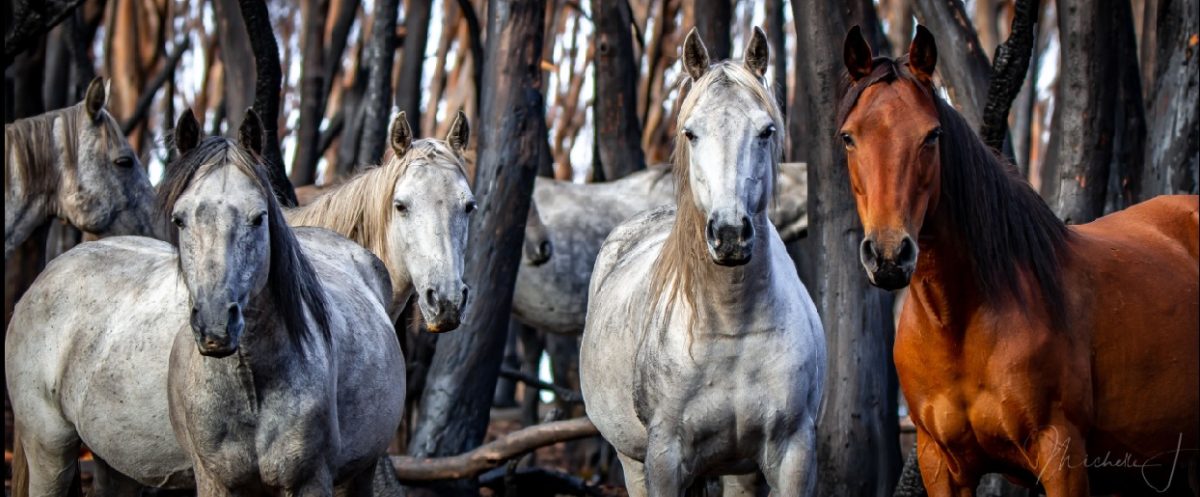
A report from the Federal Senate’s Environment and Communications References Committee investigating the impacts and management of feral horses in the Australian Alps will be tabled this Friday. Photo: Snowy Brumby Photography Adventures/Facebook.
UPDATE 6 October 12:00 pm: The Senate Environment and Communications References Committee this week requested a further extension until 13 October 2023 to allow it to consider the evidence received and to conclude its deliberations.
UPDATE 29 September 11:00 am: In a second progress report filed on Thursday, September 28 the Senate committee investigating the Impacts and Management of Feral Horses in the Australian Alps requested a further extension of time to report until 6 October 2023 to allow it to consider the evidence received and to conclude its deliberations.
26 September 12:50 pm: If you thought the pressure was on the Australian Wallabies at the start of the week, spare a thought for Australia’s wild horses, or brumbies, whose fate will be informed by federal politicians later this week.
This Friday marks D-Day for the free and wild horses of the nation’s alpine region as a report from a federal Senate inquiry is handed down roughly eight months after its genesis at the hands of another Brumby – former ACT Brumbies vice-captain David Pocock, now an independent ACT senator.
A successful Notice of Motion from Senator Pocock in February 2023 saw the Federal Senate’s Environment and Communications References Committee charged with investigating “the impacts and management of feral horses in the Australian Alps”.
The inquiry, according to the terms of reference, would look at best practice for reducing wild horse numbers in the Australian Alps, and their impact on biodiversity, ecological health, Indigenous cultural heritage and headwaters of the region.
Also under scrutiny are Commonwealth powers and responsibilities, the adequacy of state and territory laws and how these interact, as well as the evaluation of native habitat repair and remediation.
With 798 submissions received ahead of two public hearings held in August and September, outside Federal Parliament enormous pressure has come to bear in the two states and one territory that are home to the vast 1.5 million hectares of Australia’s alpine region.
Just last week in the ACT Legislative Assembly, an ongoing motion from Environment Minister Rebecca Vassarotti affirmed the Government’s ongoing zero-tolerance policy on the wild horses in Namadgi National Park, which borders Kosciuszko National Park (KNP).
There are currently no established wild horse populations in the ACT.
The motion included noting that the impacts of feral horses on the environment and biodiversity are in most cases catastrophic, and that significant populations of feral horses over the border in NSW pose a significant threat to the ACT should incursions occur.
The motion also raised ACT Government concerns about the misalignment of policy between it and the NSW Government, emphasising the need for the two governments to work towards achieving a coordinated and cohesive approach to feral horse management between the two bordering regions in NSW.
The ACT Government has made a submission to the Senate inquiry, describing the critical need to protect the ACT’s highly sensitive water supply and conservation areas from the feral horses.
The motion was passed last week by the Assembly without amendment.
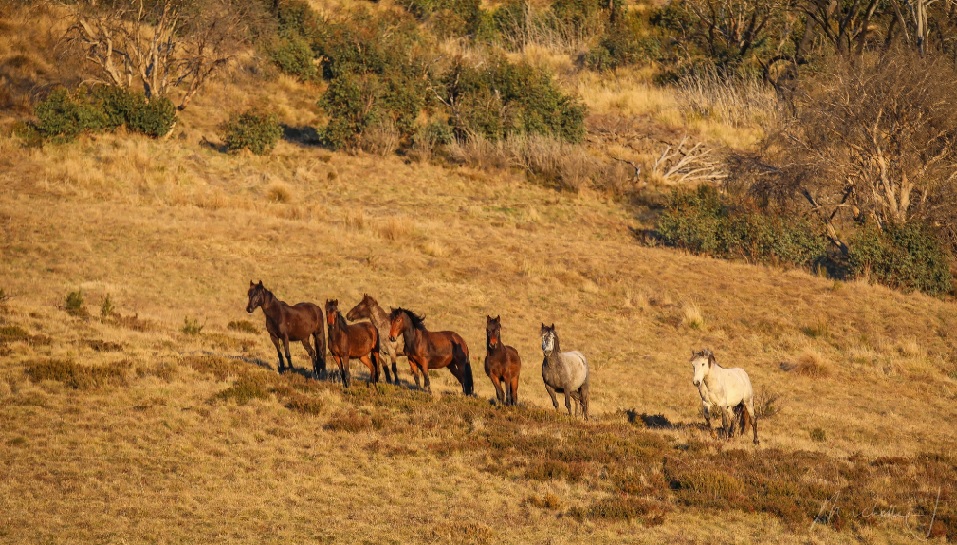
NSW Environment Minister Penny Sharpe last week said culling operations in Kosciuszko National Park would continue despite calls for them to be halted until an agreed-upon population count methodology could be implemented. Photo: Snowy Brumby Photography Adventures/Facebook.
In August, NSW Environment Minister Penny Sharpe called for submissions on a proposed amendment to the State Government’s KNP Wild Horse Heritage Management Plan, allowing aerial shooting as an additional option for the control of wild horses alongside the existing methods of trapping and rehoming, and ground shooting.
While the deadline for this feedback was 11 September, with no set date for a determination, an Upper House inquiry has been established to examine the justification for aerial shooting but the wild horse population numbers and the Government-approved counting methodologies are also under scrutiny, with independent statisticians challenging their veracity.
The community consultation closing date for the new NSW inquiry is 13 October.
Calls for a moratorium on culling operations in KNP until counting methodologies were evaluated were rejected by Minister Sharpe last week in her response to a parliamentary petition submitted by NSW MLC Emma Hurst on 1 August.
The petition followed the ground shooting of 67 wild horses in the park in May this year, which resulted in a community uproar.
The Minister says a 2022 survey using science-based wild horse population estimates found the number in KNP to be between 14,501 and 23,535.
“Even at the smaller end of this interval, there are too many horses in the national park,” she said.
However, the Minister said she had asked the National Parks and Wildlife Service to consider whether the survey design could be further enhanced ahead of an October 2023 population count.
In Victoria, brumby advocates are rallying to stem the loss of some of the state’s heritage breeds in the Alpine National Park and Barmah National Park.
According to Parks Victoria, feral horses are being removed from the parks through capture, rehoming and targeted ground shooting by professionals.
They say aerial shooting may be considered in exceptional circumstances or may be trialled if other methods fail to remove sufficient horses to reduce ecological impacts; however, aerial shooting has not been used so far.
The full report of the Senate inquiry into the impacts and management of feral horses in the Australian Alps will be available on the Parliament of Australia website from Friday.






